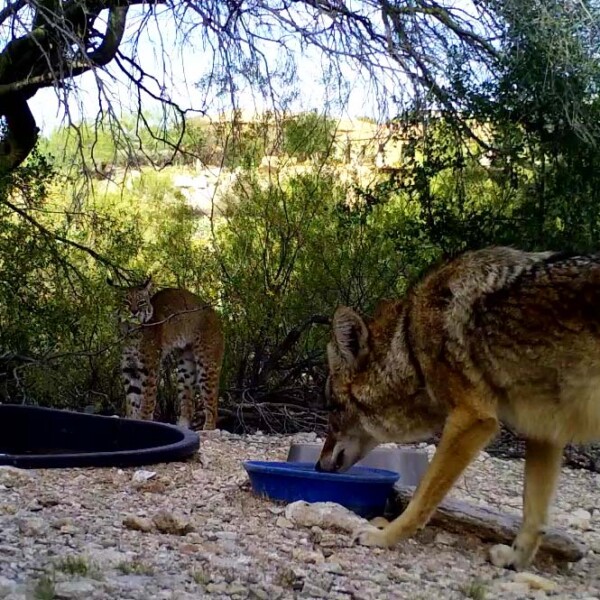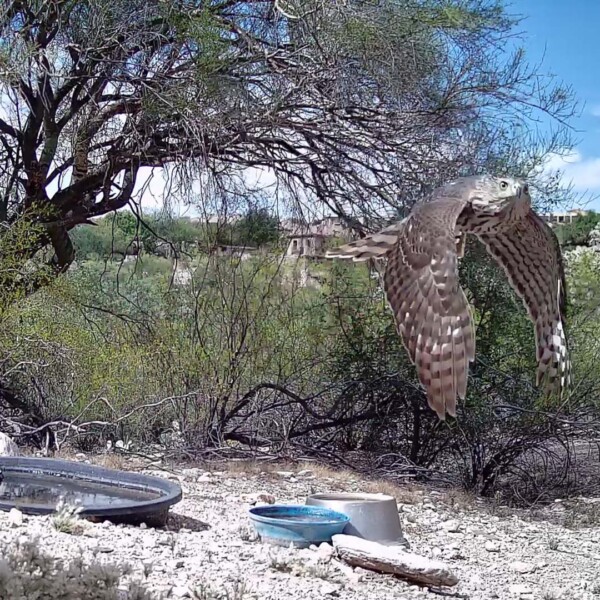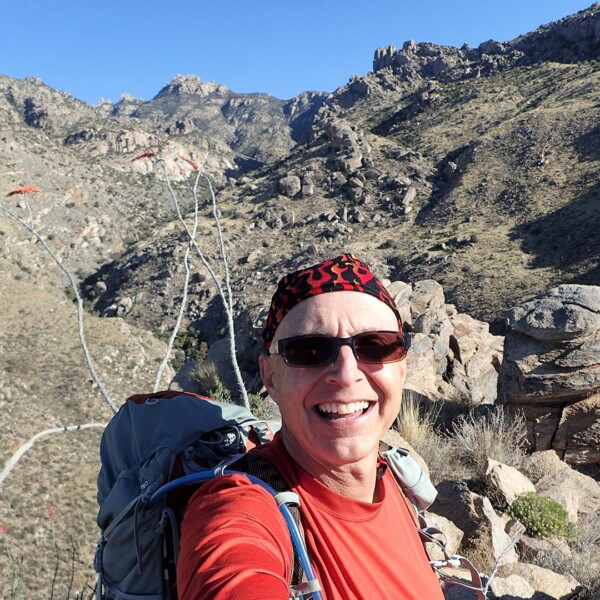Please introduce yourself! Where are you from, and what do you do?
Thanks for giving me this opportunity to share insights with Sky Island Alliance. I’m Patrick Cicero, a Tucson native who has lived here for over half a century. As an active outdoor enthusiast (backpacking, caving, climbing, and mountain biking), I’ve always enjoyed southern Arizona’s Sky Islands and their diversity of plants and animals, especially the more misunderstood venomous types. Decades of volunteering for federal and state land management agencies (NPS, USFS, BLM, and AZ State Parks) easily led to volunteering for an environmental advocacy and research organization such as yours. Before I retired, I had an exciting career as an antenna design engineer in the defense industry and quickly embraced trail camera technology to monitor neighborhood wildlife.
How did you first get involved with volunteering at Sky Island Alliance?
Your FotoFauna program is where I first got involved. For several years I’ve been uploading a monthly wildlife checklist with trail camera photos from the oasis I built on my open property so that the neighborhood wildlife would have a perennial water source. This oasis uses a buried livestock tank filled with a float valve and manually filled water bowls for the smaller animals. Initially the trail cameras were used to satisfy my curiosity about what animals lived in the desert wash behind my property in the Santa Catalina foothills. I’m always surprised by what shows up on the trail cameras beyond the typical wildlife (coyotes, bobcats, javelinas, rabbits, roadrunners, and quail). Thus far I’ve documented sightings of coatimundi, hooded skunk, spotted skunk, gray fox, raccoon, badger, Cooper’s hawk, western diamondback rattlesnake, California kingsnake, and even adult mule deer. I was very excited when I discovered Sky Island Alliance’s FotoFauna program, where these trail camera sightings could be used as data to help researchers track wildlife in our area.
Any cool stories about your time volunteering with SIA?
One of my favorite experiences as a FotoFauna volunteer has been monitoring and tracking a neighborhood female coyote that has had six litters of coyote pups since 2016 (~23 pups in all). 2016 was a special year because she had a litter of seven pups, and trail cameras allowed me to personally share in their experience of growing from six-week-old pups to fully mature coyotes. The excitement you experience by being able to view this normally unseen world of coyote parenting skills and the puppy-like behavior of the immature coyotes leaves you with a greater appreciation for your wild canine neighbors. Social media also allows you to share these experiences with a larger audience so that more people learn to live peacefully with wildlife in their neighborhood.
Why are the Sky Islands important to you?
The Sky Islands are important to me because they represent “individual pockets” of diversity in the Sonoran desert of southern Arizona. There are many species that have developed distinct genetic traits specific to their environment. For example, some of the Sky Islands have rattlesnake species that live there and nowhere else. These rattlesnakes have evolved with specialized venom and camouflage for their particular environment. Researchers have just started unraveling the mysteries of this unique venom development — but much more remains to be known. That’s why each Sky Island is so important and needs to be preserved, because they truly represent an “island” of genetic diversity that isn’t reproduced in the other Sky Islands.
What tips would you give to a future SIA volunteer?
I would recommend starting simple with a trail camera and a basic water source, such as an old water bowl for dogs. You can monitor your trail camera and upload your monthly checklist to SIA’s website. This data will help researchers and doesn’t involve a huge time commitment from the volunteer. Sky Island Alliance also hosts field projects like Spring Seeker and invasive plant removal. I would recommend those projects for people who want to enjoy the outdoors when they’re volunteering. The Sky Islands are one of our region’s most precious resources, so however you choose to volunteer, you’ll be helping to preserve these specialized habitats for future generations to enjoy and for the plants and animals that live there.
Ready to get involved? Check out our events page and volunteer opportunities for ways to join our work.



